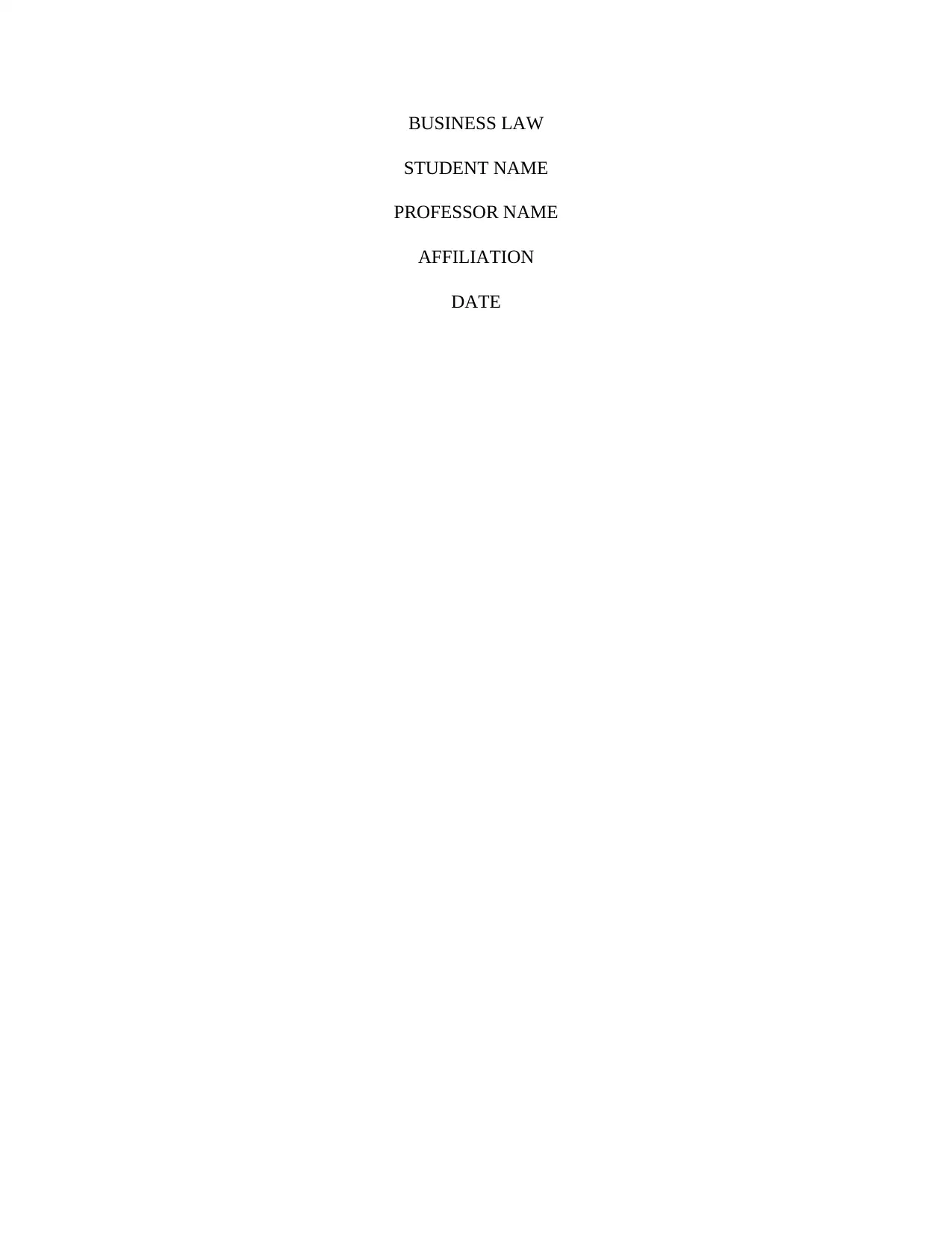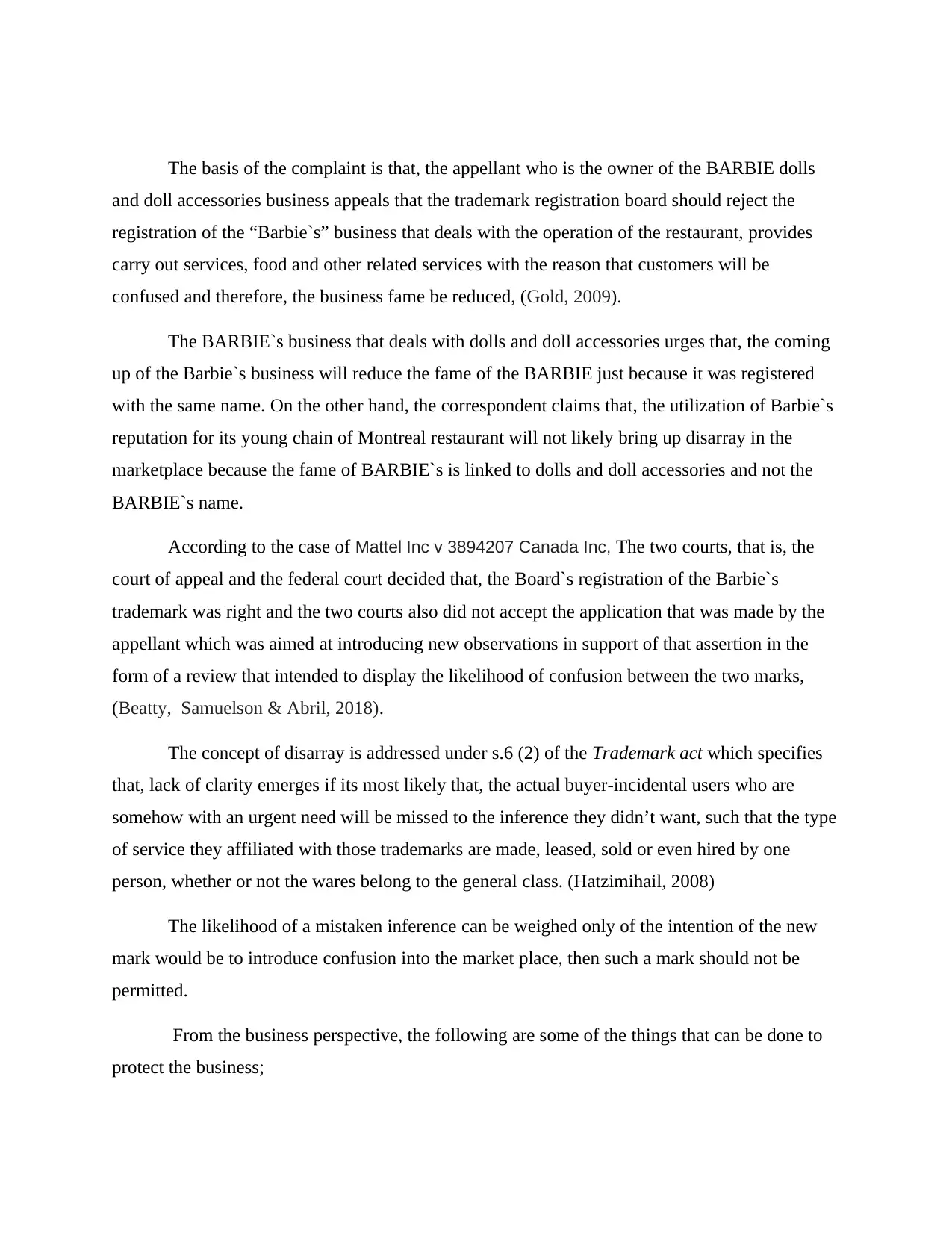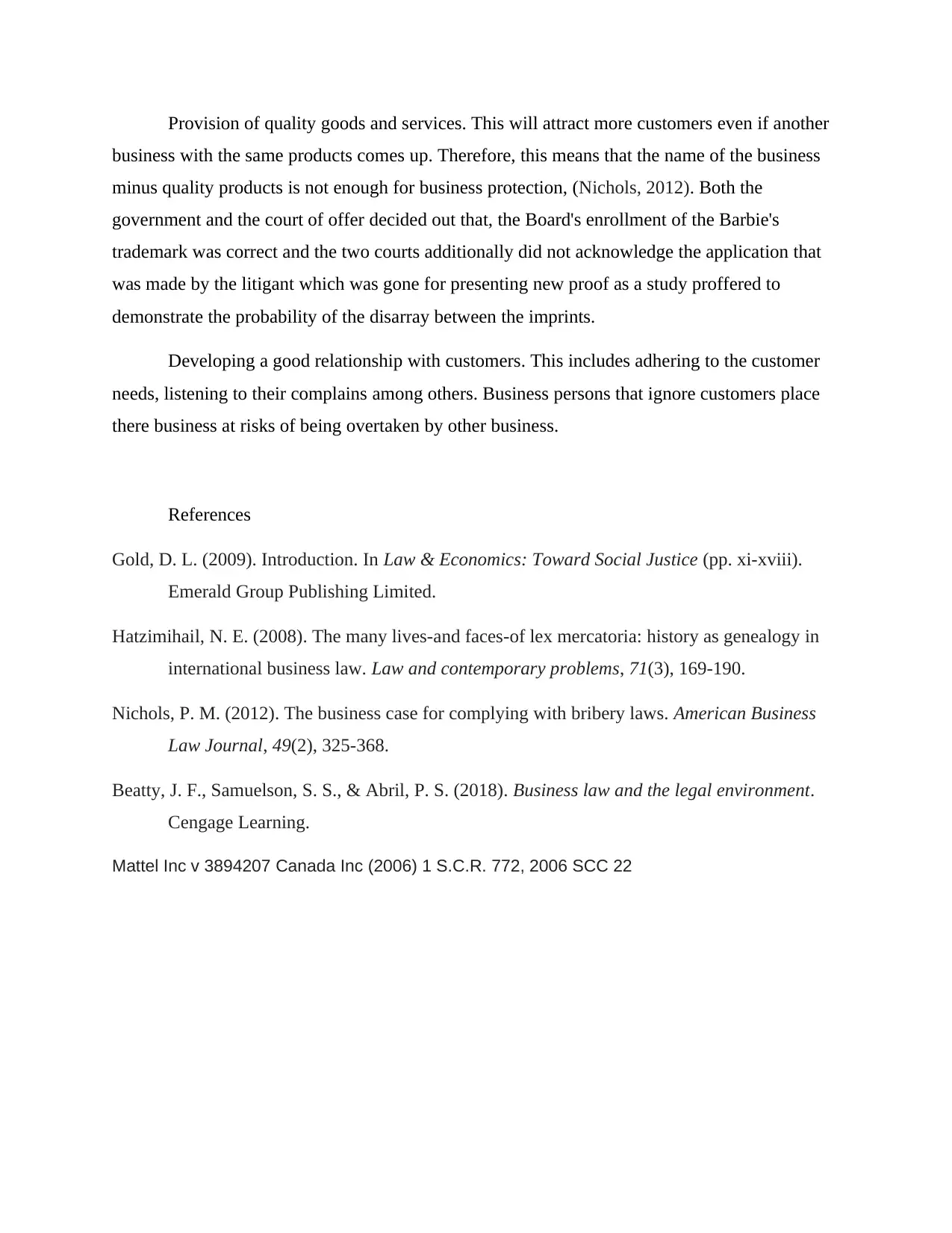MGMT1601: Business Law Analysis - Barbie Trademark Case
VerifiedAdded on 2023/05/29
|4
|723
|370
Report
AI Summary
This report examines the Barbie trademark dispute, focusing on the legal arguments presented by both parties. The appellant, owner of the BARBIE doll business, contested the registration of "Barbie's" for a restaurant, citing potential customer confusion and damage to brand reputation. The report analyzes the court's decisions, including the rulings in Mattel Inc v 3894207 Canada Inc, and the application of trademark law, specifically the concept of "likelihood of confusion" as defined under s.6 (2) of the Trademark Act. The analysis further explores the business implications of trademark protection, emphasizing the importance of quality goods and services and strong customer relationships. The report references key legal concepts and cases, providing a comprehensive overview of the legal and business considerations in trademark disputes.
1 out of 4








![[object Object]](/_next/static/media/star-bottom.7253800d.svg)